Keeping your dishwasher clean ensures it runs efficiently and remains free of odors and buildup. While vinegar is a popular cleaning solution, it is not the only option available.
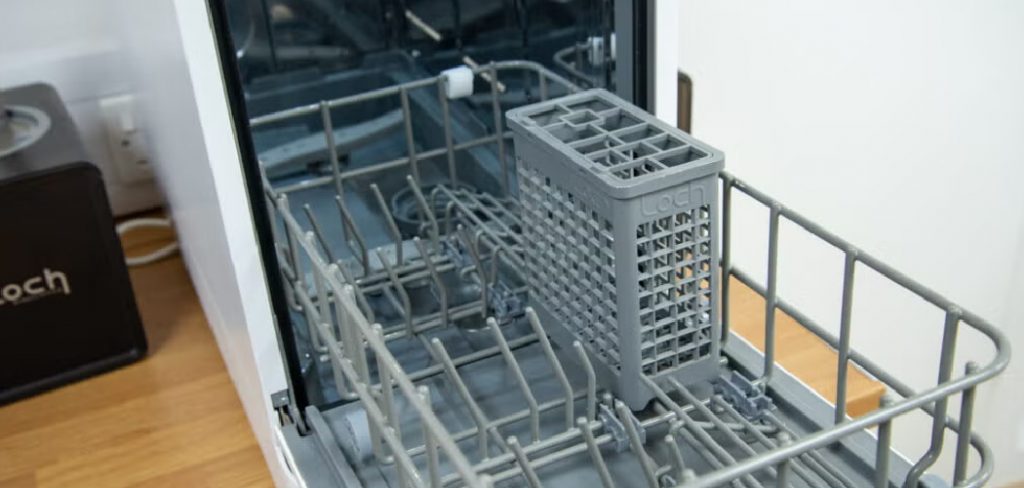
There are effective and natural alternatives to clean your dishwasher without using vinegar, which can be particularly helpful for those who wish to avoid its potential acidity-related drawbacks. Regular maintenance is crucial as it helps to prevent the accumulation of food particles, soap scum, and grease that can clog your dishwasher and reduce its performance over time.
This guide will walk you through how to clean dishwasher without vinegar, using safe, accessible cleaning agents such as baking soda and hydrogen peroxide. These methods are effective and environmentally friendly, ensuring your dishwasher remains spotless and odor-free. Following these steps can preserve your appliance’s lifespan while maintaining a clean and fresh kitchen environment.
Why Avoid Vinegar for Cleaning Your Dishwasher?
Potential Damage to Dishwasher Components
While vinegar is often touted as an effective natural cleaner, its high acidity can harm certain parts of your dishwasher. Over time, repeated use of vinegar can wear down rubber components such as seals, hoses, and gaskets. This gradual deterioration may lead to leaks, malfunctions, or costly repairs. Protecting these key components is essential for maintaining the efficiency and longevity of your appliance.
Limescale Buildup
Contrary to popular belief, frequent use of vinegar in areas with hard water can sometimes exacerbate the problem of limescale buildup. Mixed with minerals in hard water, vinegar may cause residues to form on internal surfaces, reducing your dishwasher’s effectiveness. Instead of resolving hard water-related issues, overuse could inadvertently contribute to ongoing buildup, impacting your dishwasher’s performance.
Alternatives to Vinegar
Fortunately, several safe and effective alternatives to vinegar clean thoroughly without risking damage to your dishwasher. For instance, baking soda and hydrogen peroxide are excellent options that remove grime, odors, and grease while being gentle on your dishwasher’s components.
These solutions are reliable and environmentally friendly, ensuring that your dishwasher stays clean and functions optimally for years to come.
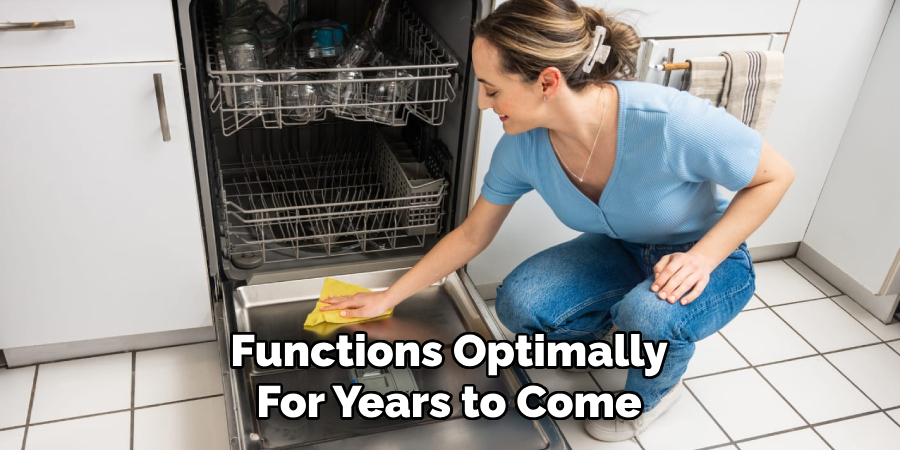
Materials and Tools Needed
To effectively clean your dishwasher without risking damage, gather the following materials and tools:
Cleaning Agents
- Baking Soda: Known for its mild abrasiveness and deodorizing properties, baking soda is ideal for removing grime and tackling odors.
- Commercial Dishwasher Cleaners: These cleaners are specifically designed for dishwashers and are readily available in most grocery stores, providing efficient and safe cleaning.
- Lemon Juice: A natural cleaner, lemon juice is gentle yet effective, with antibacterial properties that help sanitize surfaces while leaving a fresh scent.
- Hydrogen Peroxide: This versatile cleaner is excellent for disinfecting hard-to-reach areas and removing tough stains.
Tools You’ll Need
- Microfiber Cloth or Sponge: Essential for wiping down surfaces, microfiber cloths are gentle and effective at capturing dirt and grime.
- Toothbrush: Perfect for scrubbing tight or hard-to-reach spots, such as corners or drain areas.
- Small Bowl: Useful for mixing baking soda, lemon juice, or hydrogen peroxide cleaning solutions.
- Measuring Spoons: Handy for ensuring the correct proportions when preparing cleaning mixtures.
With these materials and tools on hand, you’ll be well-equipped to clean your dishwasher and maintain its performance thoroughly.
Empty the Dishwasher
Why You Should Empty the Dishwasher
Removing all dishes, racks, and utensils before cleaning is crucial to ensure every part of the dishwasher is accessible. This allows for a deep clean of all surfaces, including areas often overlooked, such as spray arms and filters. Eliminating any lingering food particles or residue prevents them from spreading during the cleaning process, which helps maintain optimal hygiene and performance.
Tip for Cleaning Racks and Trays
Once the dishwasher is empty, please take out the racks and utensil trays to clean them separately. Use a soft brush or sponge and mild dish soap to scrub away grease, residue, or any buildup that may have settled on these components. Pay special attention to corners and grooves where grime tends to collect.
Rinse thoroughly and allow them to air dry before reinserting into the dishwasher. This step not only ensures cleanliness but also prolongs their lifespan.
How to Clean Dishwasher Without Vinegar: Clean the Filter
Locating the Filter
The filter is typically located near the drain area at the bottom of the dishwasher. To locate it, refer to your dishwasher’s user manual for precise instructions, as the design may vary between models. Ensuring you correctly identify the filter’s position is essential for proper maintenance and cleaning.
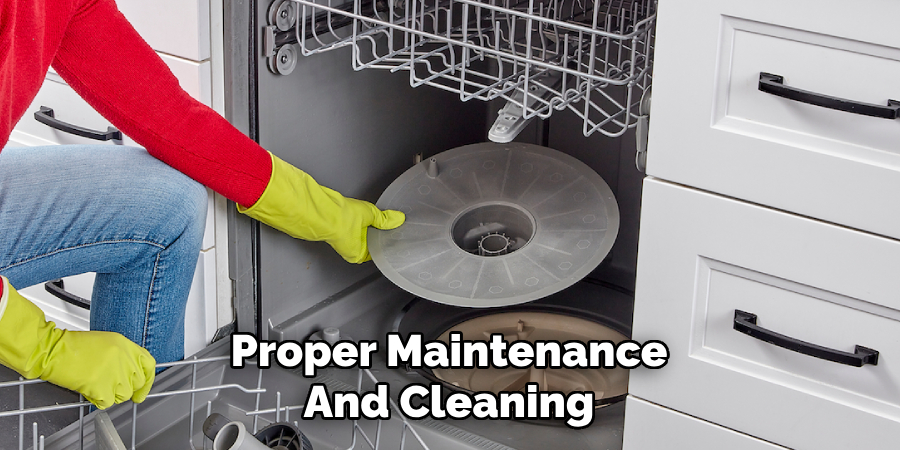
How to Remove and Clean the Filter
Carefully remove the filter by twisting or lifting it, depending on your dishwasher’s design. Avoid using excessive force to prevent any damage to the filter or the surrounding components. Once removed, wash the filter thoroughly under warm running water. Use a sponge or a soft brush to scrub away any food particles, grease, or other debris stuck to its surface.
Using Baking Soda for the Filter
For filters with stubborn grime or residue, sprinkle a small amount of baking soda directly onto the surface. Gently scrub the filter with a brush or sponge to lift and remove the remaining buildup. Baking soda helps break down tough grime and acts as a natural deodorizer, leaving your filter fresh and clean.
Reinstalling the Filter
After cleaning, ensure the filter is completely dry before reinstalling it. Place it back into its original position securely, ensuring it locks into place if required. Properly reinstalling the filter is critical to maintaining the dishwasher’s performance and preventing blockages in the drainage system. Regular cleaning of the filter will keep your dishwasher operating efficiently and odor-free.
Clean the Interior
Cleaning the interior of your dishwasher is an essential step to ensure it operates effectively and remains free from odors and grime.
Using Baking Soda
Sprinkle 1 cup of baking soda evenly across the bottom of the dishwasher. Allow it to sit for 15 minutes, as this will help absorb any lingering odors and loosen grime stuck to the interior surfaces. Once the waiting period is over, run a short, hot water cycle. This method will leave your dishwasher fresh, clean, and ready for optimal performance.
Alternative Method with Lemon Juice
If you prefer a natural, fragrant alternative, place a bowl of lemon juice on the top rack of the dishwasher. Run a hot water cycle, allowing the steam and acidity of the lemon juice to disinfect the machine and eliminate stains. This method not only cleans but also leaves behind a pleasant citrus aroma.
Using Hydrogen Peroxide
Mix hydrogen peroxide and water in a spray bottle for a deeper clean. Spray the solution inside the dishwasher, focusing on walls, door seals, and hard-to-reach corners. Allow it to sit briefly to tackle any built-up residue or bacteria. Afterward, wipe down these areas thoroughly with a clean cloth or sponge.
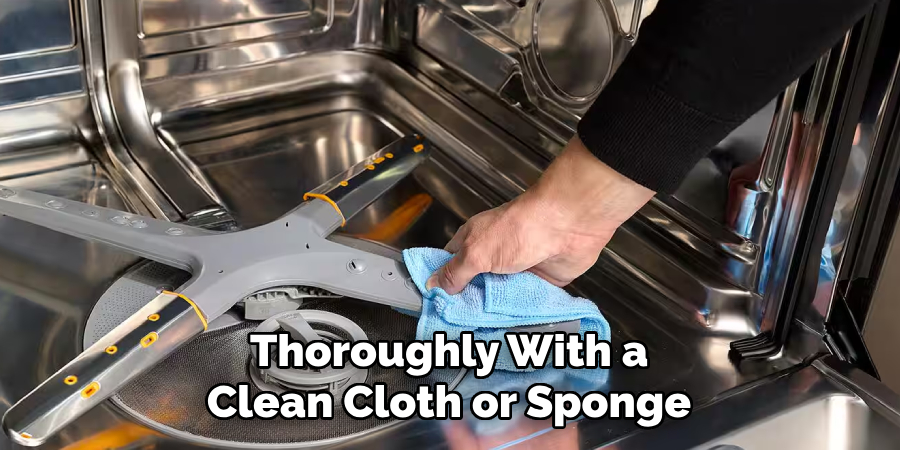
Rinsing the Dishwasher
After applying any cleaning method, always finish by running a rinse cycle. This step removes all cleaning agents and residues, leaving your dishwasher spotless and ready for use.
Clean the Door and Seals
Focus on the Door Seals
The door seals and edges of your dishwasher are often overlooked but are critical areas to clean for maintaining hygiene and efficiency. Use a damp microfiber cloth to gently wipe away debris, grease, and buildup from the rubber seals and the edges of the door. Pay close attention to these areas, as they tend to trap food particles and moisture, which can lead to odors or mold if not properly cleaned.
Using a Toothbrush for Stubborn Grime
A soft-bristled toothbrush can be a lifesaver if you encounter sticky buildup or grime that is hard to remove. Dip the toothbrush in a gentle cleaning solution, such as diluted vinegar or dish soap mixed with water, and scrub the rubber seals and crevices along the edges of the door. The narrow bristles can reach into tight spaces, ensuring a thorough clean without damaging the seals.
Wipe Down the Door
To finish, clean the dishwasher door itself. Dampen a clean cloth with water and add a bit of dish soap or hydrogen peroxide. Wipe down the inner and outer surfaces of the door, focusing on removing fingerprints, grease, or watermarks. This will make the dishwasher look spotless and prevent future buildup, ensuring consistent performance.
Clean the Spray Arms and Nozzles
Locating and Removing the Spray Arms
Most dishwashers have removable spray arms, typically located at the bottom and top of the appliance. These spray arms are responsible for distributing water evenly throughout the dishwasher. To begin cleaning them, carefully remove the spray arms by following the instructions provided in your dishwasher’s manual. This ensures a proper and damage-free extraction process.
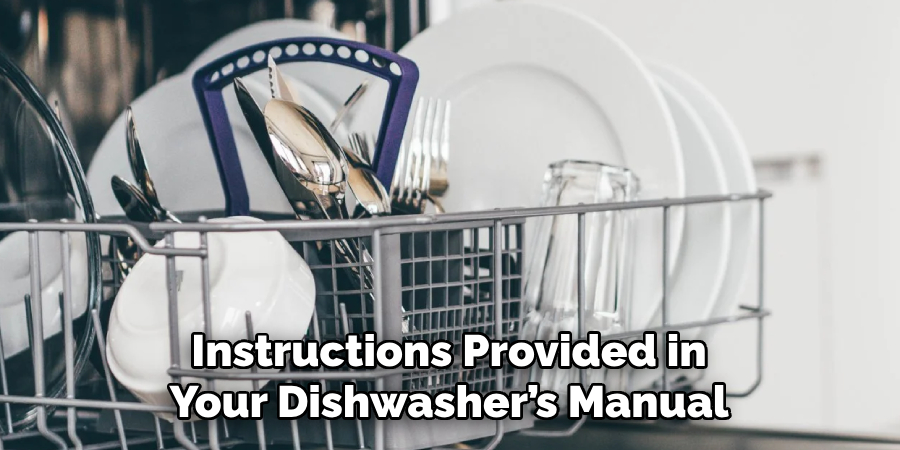
Cleaning the Nozzles
Once removed, inspect the spray arms for any blockages or buildup within the small spray holes. Clogged nozzles can greatly affect the dishwasher’s performance by reducing the effective spray of water. Use a toothpick or a small brush to loosen and remove debris from these holes carefully.
For a deeper clean, soak the spray arms in a basin filled with warm, soapy water for a few minutes to help dissolve stubborn grease or mineral deposits. Rinse thoroughly with clean water afterward to remove any soap residue.
Reinstalling the Spray Arms
After thoroughly cleaning and inspecting the spray arms, reinstall them securely by aligning them properly and following the manual’s guidance. Ensure they rotate freely without obstruction. Properly functioning spray arms will enhance your dishwasher’s efficiency and help ensure cleaner dishes after each cycle.
Run a Final Hot Cycle
Run a Final Cleaning Cycle
After cleaning all parts of the dishwasher, run a full hot water cycle with no dishes inside. This ensures that any remaining cleaning agents or loosened debris are thoroughly rinsed away, leaving the appliance fresh and disinfected. The water’s high temperature helps eliminate any lingering bacteria or germs, promoting a hygienic environment for your dishes.
Check for Odors
Once the cycle is complete, open the dishwasher and check for any persistent odors. If an unpleasant smell remains, you can repeat the baking soda cycle by sprinkling a cup of baking soda across the bottom of the dishwasher and running another hot water cycle.
Alternatively, place a small bowl of hydrogen peroxide inside, making sure it’s securely positioned to avoid spilling and run one more hot cycle. This additional step will effectively neutralize any remaining odors, leaving your dishwasher clean and fresh.
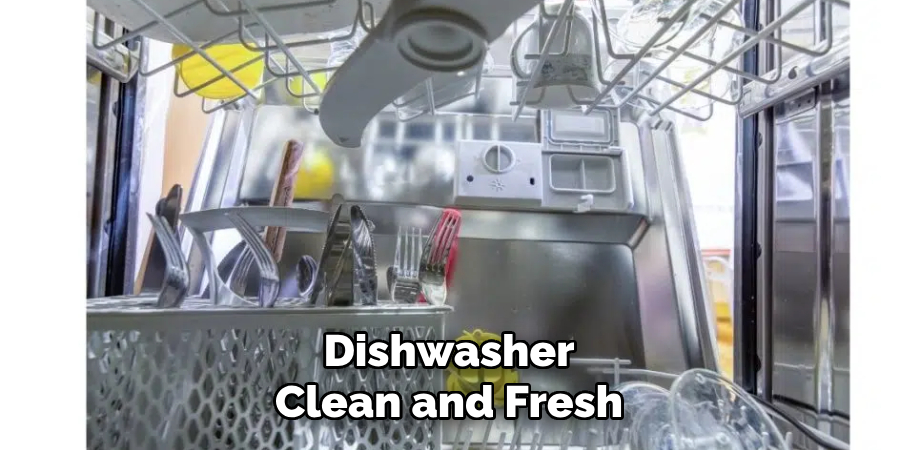
Conclusion
Learning how to clean dishwasher without vinegar is simple and effective when following the outlined steps. Start by emptying the dishwasher and removing the filter for cleaning. Then, scrub the interior and door seals thoroughly to eliminate buildup.
Next, clean the spray arms to ensure proper water flow, and finish by running a final hot cycle with baking soda or hydrogen peroxide for optimal freshness. Regular maintenance performed once a month or as needed will keep your dishwasher running smoothly and odor-free. Explore safe, natural cleaning solutions like baking soda and hydrogen peroxide for an eco-friendly approach to a spotless appliance.
Professional Focus
Angela Ervin, a former interior designer turned blogger, specializes in kitchen design and renovations. Through her website, she blends her passion for cooking with design expertise, sharing practical and creative ideas. Known for balancing functionality and beauty, Angela’s insightful content has made her a trusted voice in home design and lifestyle.
About the Author
Angela Ervin, an experienced interior designer and blogger, combines her passion for kitchen renovations with storytelling. Living in Petersburg with her family, she enjoys cooking and testing her projects firsthand. Known for her humor and relatable style, Angela shares creative, functional design insights through her content, making her a trusted voice in home design.
Education History
University: Virginia Commonwealth University
Degree: Bachelor of Fine Arts (BFA) in Interior Design
- Angela’s education at VCU focused on mastering core interior design principles, including spatial planning, color theory, materials selection, and sustainable design practices.
- She gained hands-on experience through studio projects and collaborative design exercises, which honed her ability to create functional and aesthetically pleasing environments.
- Her coursework also emphasized problem-solving and practical applications of design, preparing her for real-world projects like her self-directed kitchen renovations.
- The program’s strong foundation in both technical skills and creative expression shaped Angela’s ability to seamlessly integrate form and function in her work.
